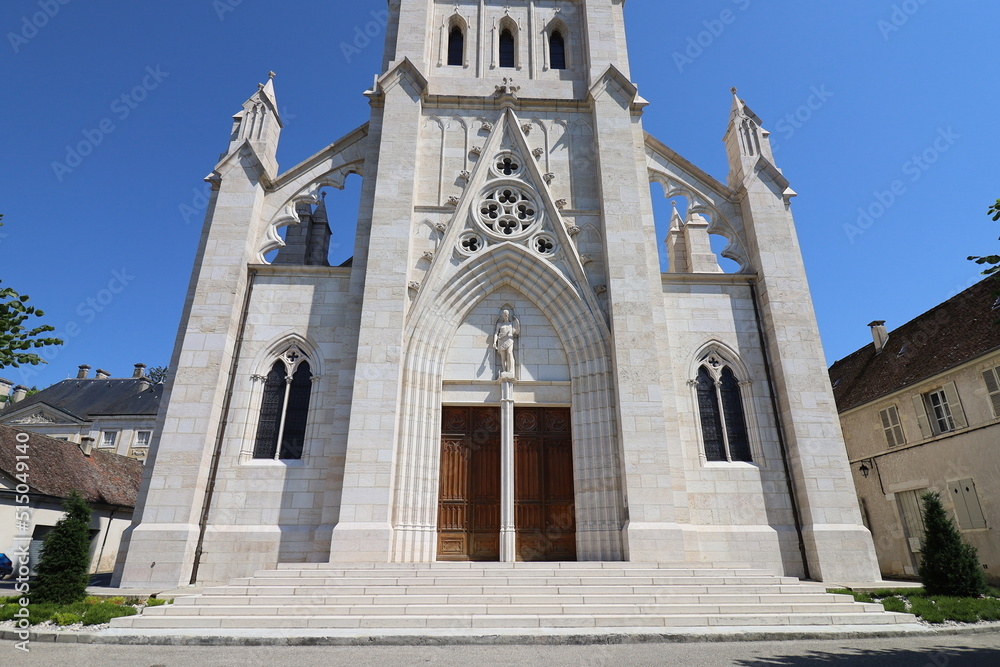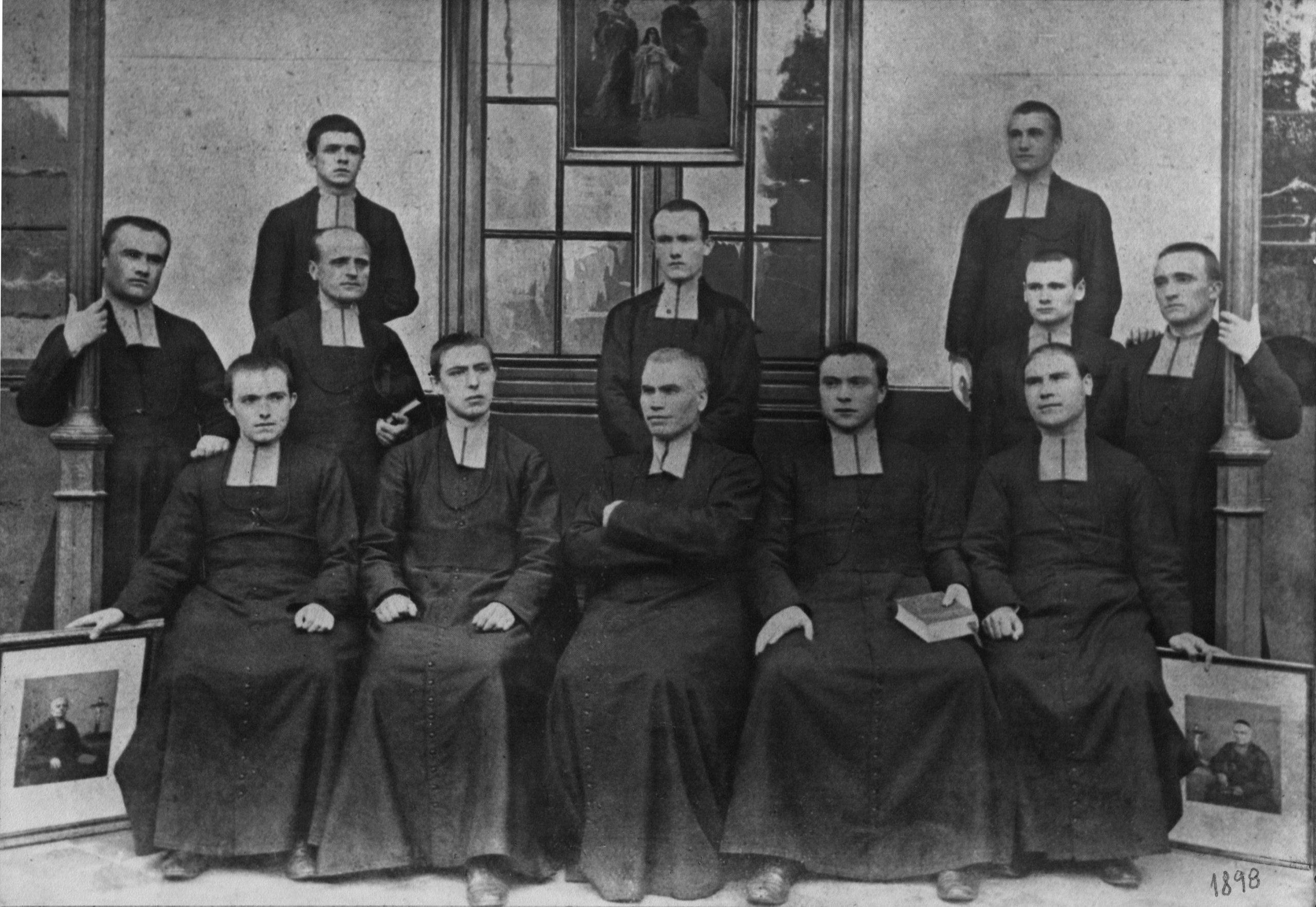
The work of Brother Gabriel Taborin continues…
To use an expression familiar to Brother Gabriel, we can say that his Institute was not only “the work of men, but the work of God”. He saw his Institute as continually growing: “Our Congregation, dear Brothers, like all things, has had a beginning. To recall here the difficulties of every kind which it has had to endure in its beginnings would go beyond the limits we have set for ourselves. History will one day recount them to the glory of the Author of all good. For our part, we limit ourselves to saying that our Congregation is less the work of man than the work of God.
At the beginning it was but a mustard seed, often in danger of being smothered; but with the blessing of Heaven and the high and benevolent protection of the Bishop of Belley, Mgr. Devie, whose memory lives forever, this mustard seed grew so fast that it is today a huge tree” (New Guide of the Brothers of the Holy Family, p. vi).
The decades of the XIX century that followed the death of the Founder, saw the continuity and development of the Brothers of the Holy Family in France. Under the direction of Brother Amadeus Depernex, disciple and successor of Bro. Gabriel Taborin, the Communities of the Brothers exercised their action in the schools, in the sacristies and in other activities. In 1874 the Institute was finally approved by the French Government.
In 1889, answering an invitation by Cardinal Rampolla, the Institute founds a first community of four Brothers in Montevideo (Uruguay): It is the beginning of the spreading of the Congregation in Latin America which will soon extend in Argentina (1908) and later in Brazil (1963). In the New World, the Brothers created a large number of educational centres as a means of human promotion and evangelization of the youth in cultural contexts very much differentiated and in conditions sometimes very difficult.
The persecution against the religious in France caused a strong crisis in the Institute but offered the occasion of new foundations such as in Tunisia (1902), in Italy (1903) and in Spain (1909). If the foundation in Africa land was transitory, the Brothers established themselves well in Italy, where, initially they moved the General Administration and the Formation House, and where they invented the products of the “Kario” brand, still nowadays marketed.

Later they set up schools and became involved in some parishes in the north of the country. They also have a strong missionary activity in relation with the Brothers of Africa through the CAM (Mission Animation Centre) of Villa Brea (Chieri).
In Spain it is mainly the education and catechesis as mission of Institute that the Brothers have developed. They have schools very much appreciated by the formation both human and Christian of the children and youth
In 1958, in response to the encyclical Fidei Donum of Pope Pius XII, it starts a new presence of the Congregation in Africa through the merging with a young diocesan Congregation, “the Brothers of the Holy Family of Ouagadougou” (Burkina Faso). It is the realization of a missionary project towards which the Founder had oriented from 1854 when she sent some Brothers to the United States of America, though this initiative was not successful.
The missionary impulse (‘ad gentes’), always present in the Institute, led in 1977 the Brothers of Spain to Ecuador, where there are now three communities dedicated to education in the Amazonia, and one Formation House in Quito, the capital. In 1987, the Brothers of Italy settled in Mexico, where they live and have at present two communities
After the Vatican Council II, as the other religious congregations, the Institute of the Brothers of the Holy Family started an extensive movement of renewal that means to turn to the evangelical inspiration of the way of life, as conceived by Brother Gabriel Taborin, and to put in first place the life of Jesus, Mary and Joseph at Nazareth and the Christian fraternity in daily life, with the adaptation of the personal and community aspects to the conditions of today’s world.
Like many other religious congregations, it is experiencing a sharp reduction of personnel in Western countries and is developing in the Third World. The sharing of the mission and spirituality of the Institute between religious and laity is producing various forms of collaboration and co-responsibility. Among these, we can mention the A.I.S.F. (International Holy Family Association) which groups together the schools for which the Institute has the authority of guardianship or ownership, and the association of lay people called “Nazarene Fraternities”. The different groups and associations created around the Institute are integrated into the “Sa-Fa Family”.
The 2019 General Chapter proposed the implementation of a process of reorganisation and revitalisation of the Institute. The result was the constitution of new administrative units from 2022: the Province of Loreto-Saint Anne with the communities of France, Italy, Burkina Faso, Benin, Ivory Coast and Ghana; the Province of Our Lady of the Assumption with the communities of Spain, Ecuador, Colombia, India and Mexico; the Province of Our Lady of Hope with the communities of Uruguay, Argentina and Brazil and the Vice-Province of Saint Joseph the Worker with the communities of the Philippines, Indonesia and East Timor.
In 2019-20, the Covid19 pandemic prevented many meetings, gatherings and face-to-face pastoral activities from taking place in schools and communities. It was, however, an opportunity to note some weaknesses and to learn new communication and teaching techniques.
The cause of canonization of Br. Gabriel Taborin arouses since years ago a movement of interest around his person. More and more Christians from different countries see in him a witness of the Gospel and someone who can accompany them and guide them today in their response to the universal call to holiness. His condition of lay religious, at the same time man of Church and close to the people, his tireless activity of animator of the Christian community, his invitation to every Christian to enter into relationship with the Holy Family of Nazareth to live daily the evangelical simplicity and fraternity, make of him the bearer of a gift of the Holy Spirit, of a charism, of which the Church and the world are always in need.

To conclude, nothing better than to share Brother Gabriel’s wish: “It is a very sweet satisfaction, dear Brothers, to see that the branches of this tree which we love so much, have expanded to a large number of dioceses, and that thousands of children find refuge under its beneficial shade. May it continue to grow, that it might shelter a bigger number of young souls yet, who might be otherwise withered and burned by the winds of passions even inside of the garden of the Church where they are living by the grace of baptism.”
Oh! Yes, may this tree we so care for continue to spread out and to bury its roots deep into piety, humility, purity and obedience, and may it be incessantly bathed by the vivifying waters of grace. May it remain incorruptible amidst the storms of passions and resist its enemies, seeking to overthrow it. May it bear but good fruit. Such must be the vow of every good Brother of the Holy Family” (New Guide of the Brothers of the Holy Family, p. vii).
Bro. Teodoro Berzal
